This post is the second part in a series of posts looking at the definitions of various lens terminology. In the first part I talked about three subjects, contrast, sharpness and flare. In this part I have managed to construct an entire post on a subject that I find myself quite frequently rolling my eyes at, bokeh.
What is Bokeh?
Bokeh is the word used to describe the aesthetic qualities of the out of focus areas within an image. If you’ve ever read anything on the subject you will likely know that the word Bokeh is a Japanese word that has – at some point in the not particularly distant past – made its way into the English language.
Unlike most subjects within optics, there’s little or no way to measure bokeh objectively. MTF charts can show potential for “confused” bokeh, but how this is actually interpreted I don’t know, or care, I have little time for graphs. The answer to this broad lack of scientific measurement is a large spectrum of adjectives. The less scientifically minded might just use simple adjectives like “good” or “bad”, with perhaps the more creatively minded using adjective words that leave a little to interpretation like “creamy” and “bubbly”. The more scientifically minded often then relate these adjectives back to what they think is going on in a lens, more often than not, mentioning things like spherical aberrations and astigmatism.
To make things slightly more complicated – at least for the sake of this post – I personally don’t like using the words “bad” or “good” in my descriptions of bokeh. Though for the sake of understanding the basics, I do concede that there is some sense to the idea of using these simple adjectives. But, once these basics have been grasped, the words bad and good are best set aside.
“Good” vs “Bad” – the basics of bokeh
When, as photographers, we choose to knock a background out of focus, the primary reason is to separate our subject from said background. It is to isolate our subject and to sit it forward from what is behind it. By having a subject in focus and a background out-of-focus the eye is naturally drawn to what is sharp, and what is out-of-focus can be all but ignored. It is this objective merit by which many define “good” and “bad” bokeh – “good” bokeh is easy to ignore and sits back from the subject, “bad” bokeh is distracting and sits forward in the composition.
Good and bad might therefore seem like reasonable adjectives to use, the problem is, when using them in isolation they can very easily be misinterpreted. Bokeh is an extremely subjective topic within photography. Some folks crave crazy, swirling highly distracting Bokeh that makes a subject look like its being sucked into some sort of spinning votex. To them, this Bokeh might be said to be “great”, which, as a synonym of good, can make things terribly confusing.
The above is an obvious, and many would argue easy to avoid issue. After all, it’s fair to say that when people are describing lenses with swirling bokeh, they’re often quick to relate such adjectives as “swirling” along side “great” or “terrible” or however they feel about that type of bokeh. The problem comes about to a greater extent because of the vagaries of the use of some words, and the confusing nature of the others. As examples, some people define “neutral” as the same as “good”, whereas others might describe “creamy” bokeh as the same as “good”. But “creamy” bokeh can also be “bad” since lenses that create “creamy” bokeh in the background, might create “bad” bokeh in the foreground. Other people describe “creamy” bokeh using technical terms like “under-corrected spherical aberrations”, which might sound like a bad thing, when in fact it’s actually “over corrected spherical aberrations” that can cause “bad” bokeh… … etc, etc.
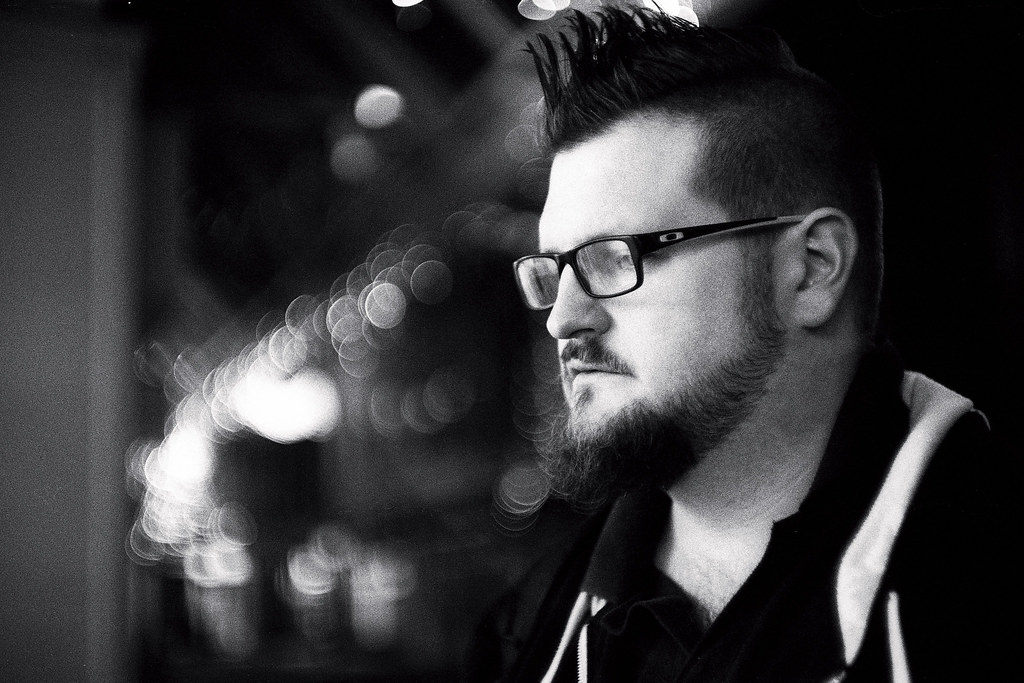
Misinterpretation of the definition
Additionally to this, bokeh is actually – as mentioned at the beginning of the post – better thought of as the description of the aesthetic of blur, not a description of the extent of the function of blur. So, if a lens causes “bubbly” distracting bokeh it is in fact more accurate to say that it fails in the function of subject/background separation, not that it fails at bokeh.
To allocate the word “bad” to a failure of the function of blur is fine, but if bokeh is an aesthetic thing, to allocate the word “bad” to it is – at least to my mind – not a fully considered approach defining it. Appreciation of anything aesthetic is surely open to opinion through its nature as a subjective thing? Therefore saying bokeh as an aesthetic is “bad” is just an opinion. So, since many folks actually like some of the traits associated with “bad” bokeh in their photos, saying this sort of bokeh is bad is to pretty much say these people’s opinions are wrong… and that doesn’t sit well with me. Of course, I get that most people don’t mean offence, they are just stating a preference, I just find this method of stating preference broadly unhelpful when trying to understand how a lens might render its out-of-focus.
To compound all this further, whilst the lens plays a large part in how the out of focus is rendered, there are other factors at play. The content of the out of focus areas of the image plays a big part, as does the distance between the camera and subject, as well as distance between subject and out of focus elements, not to mention the focal length of the lens and size of the film or sensor. In short, trying to predict or describe or even allocate single adjectives to the bokeh of a lens can be difficult. Even individual lenses can quite easily blur (pun intended) the lines between the extremes of good and bad from one photo to the next.
Confused yet? Well, you wouldn’t be the only one. This seemly fairly simple concept of the aesthetic of something intended to be ignored, when examined closely seems to unravel to something absurdly complicated. Unfortunately, as if to add flame to the fire of confusion, many of the articles that unpick this sort of thing read like this one and have loads of head scratching diagrams. Then at the other end of the spectrum some posts like this one can be so subjective or inconclusive it’s hard to determine what any of it means. This post is my attempt to try and address that by drawing some dots between a few of the scientific and a few of the subjective definitions.
Understanding bokeh
There seems to be two ways to approach understanding and therefore describing of bokeh. The first is to look at it from an optical and mechanical point of view with regard to what is happening inside a lens. The problem with this approach is that it requires knowledge of optics and therefore science, which to a greater extent, as I mentioned in my last post, I don’t have. The second option is to try and interpret and use the wide range of adjectives people apply to their various and personal subjective observations. This, as I say, can quite easily lead to misunderstandings.
I suppose my personal approach sits somewhere between the two. I’ve read enough online and in books to have some understanding of what people mean when they use sentences like “the bokeh suffers from over-corrected spherical aberrations”, and at the other end of the spectrum, I’ve also a good idea what’s meant when people say “the bokeh is creamalicious”. I don’t really know what either definition means is happening inside a lens – at least without referring back to a diagram or two and then squinting and frowning a bit (a lot). But what I do know is the look they are describing… Or at very least, I can have a good guess!
The affects of various aberrations and other determining influences on bokeh
It seems to me that the best way to approach this is to first attempt to unpick and broadly define the various aberrations as well as the optical and mechanical influences that have an affect on bokeh. Then, with these in mind, try and associate these affects with some of the more commonly used words in describing them.
I do want to preface all of this by reinforcing the point that this science stuff is fairly complicated, and largely speaking out of the grasp of someone with a brain like mine. That said, I don’t think it’s of particular importance to have a good grasp of what the optical definitions mean in order to simply understand what people mean when they talk about them. As such, the basic understanding I’ve extracted from some of the more complicated articles I’ve read on the subject has – if not necessarily made me an expert – helped me grasp the subject of bokeh better.
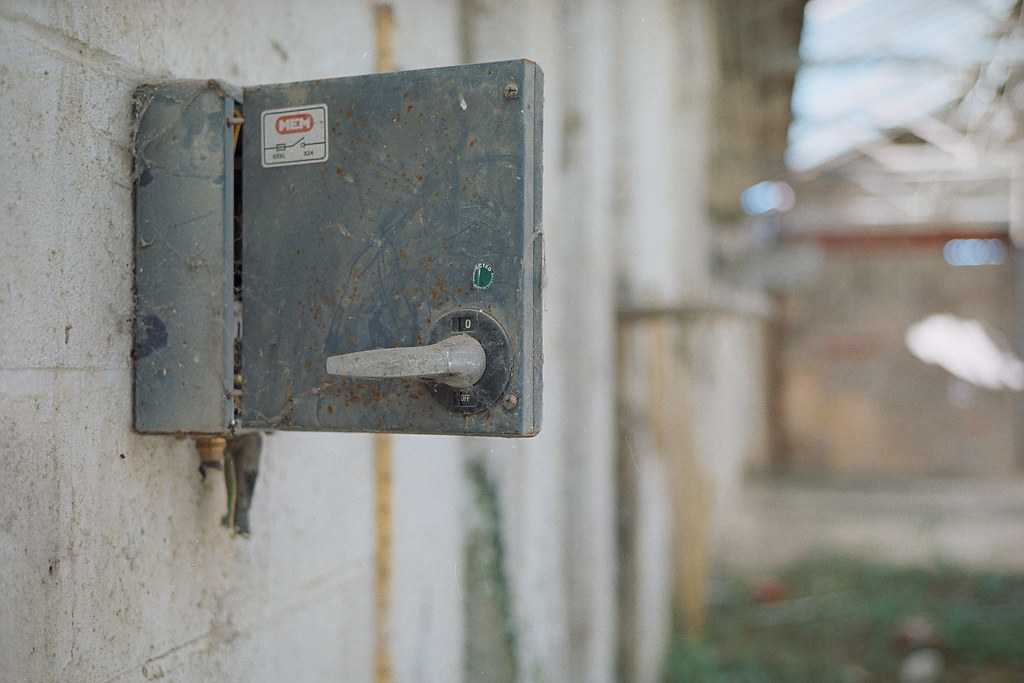
Spherical aberrations
The subject of spherical aberrations is one I broadly covered in my last post. The softening of a photo taken at wider apertures and focus shift being the two prominent issues I mentioned that specifically affect the sharpness of a photo. But whilst these effects are substantive, the affect that spherical aberrations have on bokeh is much greater in the day to day use of lenses. It is in fact spherical aberrations that define a large portion of the qualities of bokeh. At one extreme there is very smooth “creamy” bokeh, with the other extreme being bokeh that is very hard edged and even bubble-like in appearance, with varying degrees between these extremes.
Quality of bokeh vs. sharpness
In very simple terms, depending on the degree of correction applied to the affect these aberrations, the bokeh of a lens is changed in different but very pronounced ways. The problem – at least for the sake of bokeh – is that the variance in correction of these aberrations is what’s applied to achieve a sharp photo at the point of focus. But, depending on the lens design, the corrections to get said sharp photo mean that bokeh is affected in different ways. And because the primary goal of 99.9% of lenses is to be sharp at the point of focus, sometimes compromises need to be made at the expense of the subjective quality of bokeh. Which is why not all lenses – even lenses that are excellent in many other ways – don’t always have “good” bokeh. Quite simply, in-focus sharpness is considered of more importance than the quality of out of focus blur by lens designers – especially those working to a lower cost of final product.
Over corrected spherical aberrations
Over-corrected spherical aberrations cause out of focus points of light (or out-of-focus spectral highlights as some people call them) to turn into rings of light in the background bokeh of a photo. These rings in the background are the main cause of what most people would call “bad” bokeh.
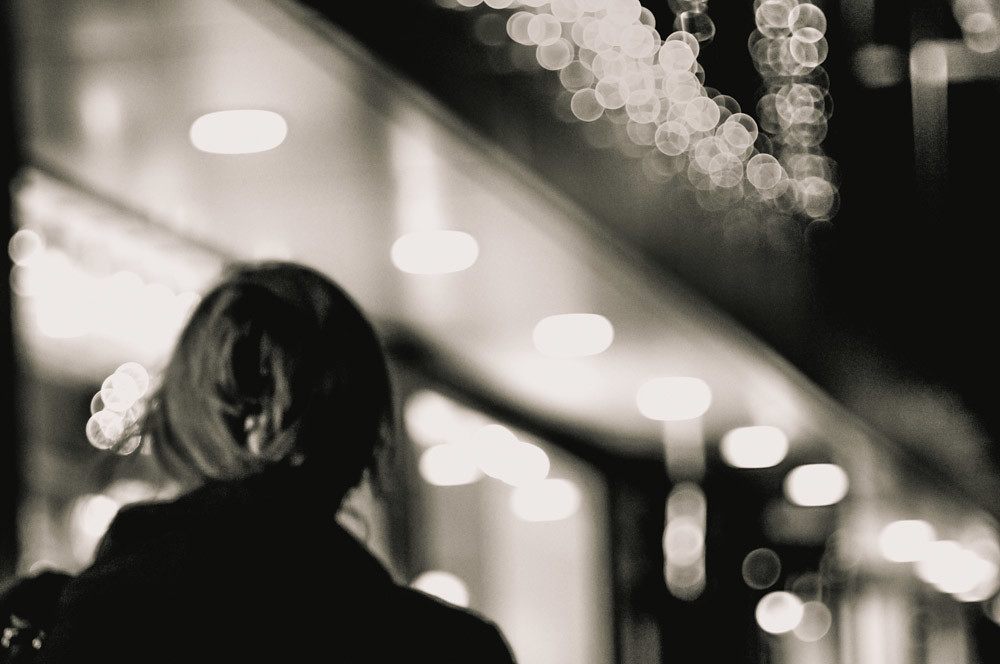
The above extreme example was taken on a Meyer Trioplan – a lens known for this overtly characterful bokeh.
These rings are not always seen as a ring though, when they are caused by multiple points of light or indeed lines of highlight in the background they can form all sorts of confusing patterns and double edges to things. Some of these edges can even appear sharp when they are clearly supposed to be blurred.

Here you can see a photo taken with a Nikon 50mm 1.2 ais. The double lines to the left of Ben’s head are indicative of this over correction of spherical aberrations. Those lines, were they in focus, would be single lines. The edges of the circles as shown on the left of Ben’s head all come together to create the double lines. Both the edges of the circles and the double lines are potentially causes of distraction to the eye within a composition.
Definitions attributed to “bad” bokeh
Bokeh like this ranges from being called “bubbly” in the case of the Trioplan, with lenses that suffer from this effect in a less pronounced way often suffering adjectives like “edgy”, “confusing”, “fizzy”, or “distracting”. Another word often used for this type of bokeh is “nisen bokeh”. I don’t know where that comes from or what it means by definition, but if you read it, it means the bokeh sits somewhere in the above category
Under corrected Spherical aberrations
Under corrected spherical aberrations cause out of focus points of light – or out-of-focus spectral highlights – to turn into very soft indistinct blobs in the background bokeh of a photo. This very soft indistinct sort of background bokeh is widely regarded as “good” bokeh.
A good example of a lens that largely speaking causes this sort of bokeh this is the Zeiss 50mm ZM Sonnar. A lens that isn’t without its flaws, but creates background bokeh that is lauded as one of the most attractive of any 50mm lens going.
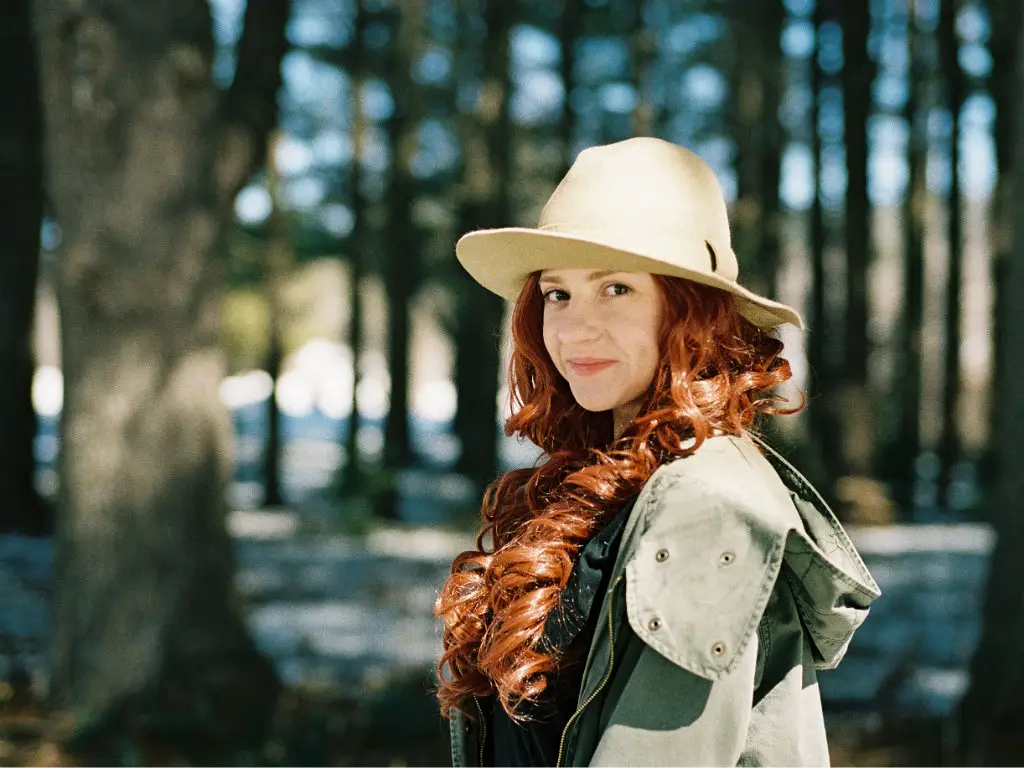
Photo courtesy of Ray Larose – A big fan of the ZM sonnar – “Cover Shoot”
Definitions attributed to “good” bokeh
This ultra soft indistinct bokeh is often referred to as “creamy” or “smooth”. I’ve also used words like “smokey” and “rubbery” where very modern lenses and very modern sensors with little or no noise create a bokeh that is so smooth it almost envelops what is surrounds in a smokey or sometimes rubbery looking bokeh.
Corrected Spherical aberrations
Somewhere between the above you might find yourself with solid out of focus highlights. These shapes have a solid edge, but are uniform in the density from edge to edge. In theory, a lens that causes bokeh like this will cause it in the background and foreground bokeh. This is one of the reasons I think “good” is a little bit of a misnomer for under corrected spherical aberrations, as this neutral bokeh is potentially more of an advantage over the widest set of circumstances.
A lens I’ve used recently that to a greater extent gave a bokeh that I found to be quite neutral was the Leica 50mm f2.5 summarit-m.
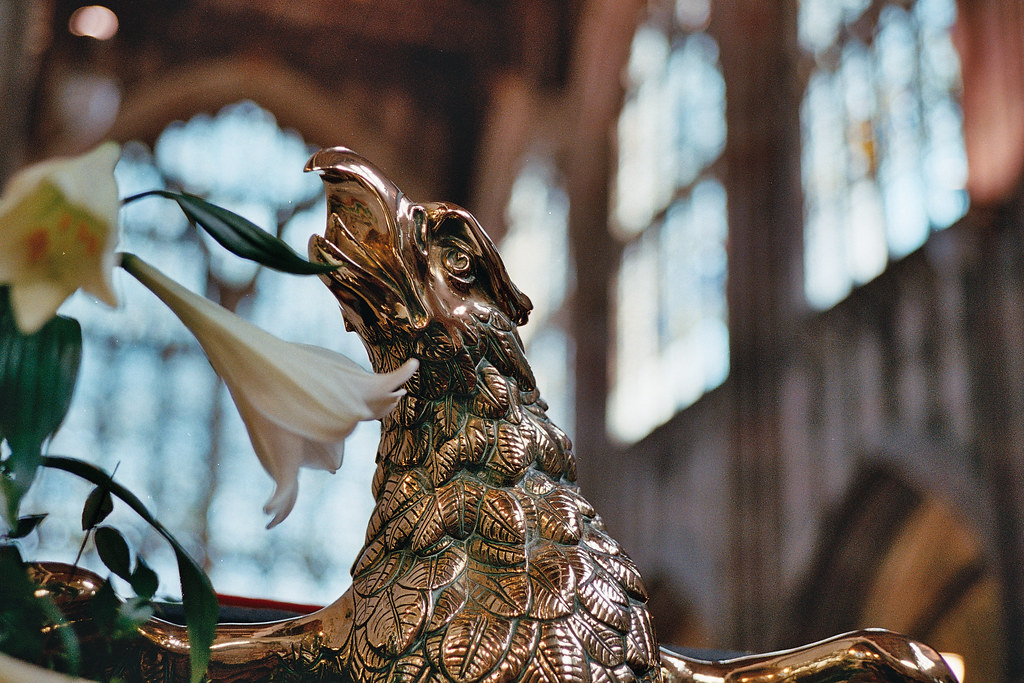
Background blur, foreground blur and spherical aberrations
To make things even more complicated in the world of spherical aberrations, blur occurs in a photo both in front of the point of focus, known as foreground blur, and behind the point of focus, background blur. Correction of spherical aberrations affects these areas of blur inversely. As such, it is quite likely that a lens with very creamy smooth beautiful background blur, also might have quite unattractive foreground blur.
That said, like most people, I only really consider background bokeh of much importance. 9 times out of 10 when people comment on bokeh they are talking about what is happening behind the point of focus, and when they talk about what is in front of the point of focus they specifically mention so.
The reason for this is that the majority of what is out of focus but between the camera and the point of focus will unlikely be the sort of out-of-focus subject that causes visually disruptive bokeh. The things that cause distracting bokeh tend to be subjects like points of light, complicated patterns of leaves with patterns of light shining through or complicated reflective surfaces. I’m not going to go into too much detail here as it would mean veering off into compositional discussion, but generally speaking these things don’t turn up in the foreground as out-of-focus objects nearly as frequently as they do in the background. And actually when things in the foreground are of that nature, they are possibly being placed there for compositionally disruptive purposes. But as I say, I don’t really want to go down that path of topic, so I’d like to leave it here by just saying, don’t worry to much about reports pertaining to bad foreground blur/bokeh. As despite the set photos on some websites showing how horrible it is, it’s not too likely to cause that much negative affect in a large portion of real life circumstances.
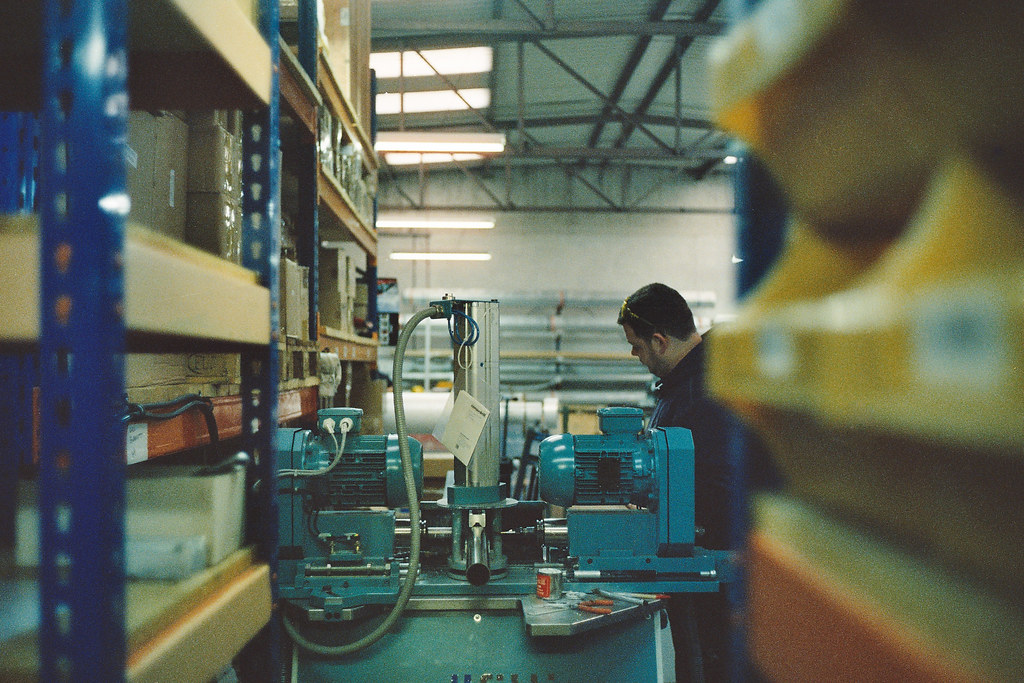
Onion rings
Correction of spherical aberrations can cause further issues known as “onion rings”. These concentric circles that show up in the out of focus highlights are – at least as far as I can gather – caused by the manufacturing process used to make aspherical lenses. Aspherical lenses are the very thing that are used to combat spherical aberrations. This is of cause yet another factor that points toward this importance of sharpness at the point of focus over and above quality of bokeh in lens design.
Aperture shape
Aperture shape also plays a big part in the appearance of bokeh. In short, if the shape of the aperture is a hexagon, then the chances are the out of focus highlights will also be hexagons. If the aperture is circular, then expect circles. Of course, it’s always worth bearing in mind that when shot wide open, all lenses have a circular aperture. And even with a perfectly circular aperture there are other factors that affect the shape of out of focus highlights.
A higher number of aperture blades can make a circular aperture, this in turn means that quite often lenses with more aperture blades are given greater credibility as likely to cause good bokeh. This is in reality a bit of a misnomer, the Meyer Tripolan as 15 or 16 blades, yet it causes crazy bubble bokeh.
Interestingly, if you look into a later model 50mm Sonnar slightly stopped down you will see the aperture makes a star shape, this results in subtly star shaped bokeh. This might sound like a bad thing, but since the lens suffers so heavily with under correction of spherical aberrations, the star shape is there to combat the effects of focus shift.
Optical vignetting – Cats eyes
Optical vignetting, most commonly associated with the darkening of corners of a photo, is also responsible for the more commonly described “cats eye” effect. This is where the shape of the bokeh closer to the edge of the frame becomes increasingly cats eye shaped rather than circular.
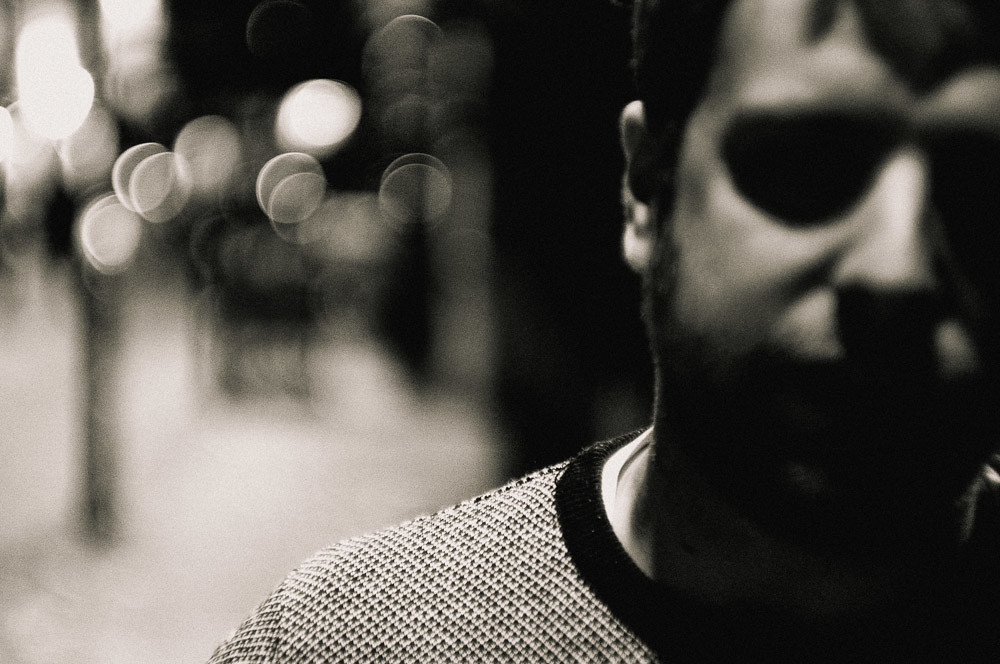
Astigmatism – Swirling bokeh
If you want to see me go cross eyed, ask me about the effects of astigmatism. I speculated in my last post that smearing in the corners of photos might be somewhat caused by it. So far, no one so far has corrected me on this, though of course that doesn’t mean I was right. I also believe – with the very basic understanding that I have – that the combination of the cats eye effect and astigmatism is what causes some lenses to give an overall impression of swirling of the bokeh. The cats eyes cause the shape, the astigmatism smears the cats eye shapes together. But clearly, since my understanding here is a little blurry (pun intended again) I’m very open to being corrected!?
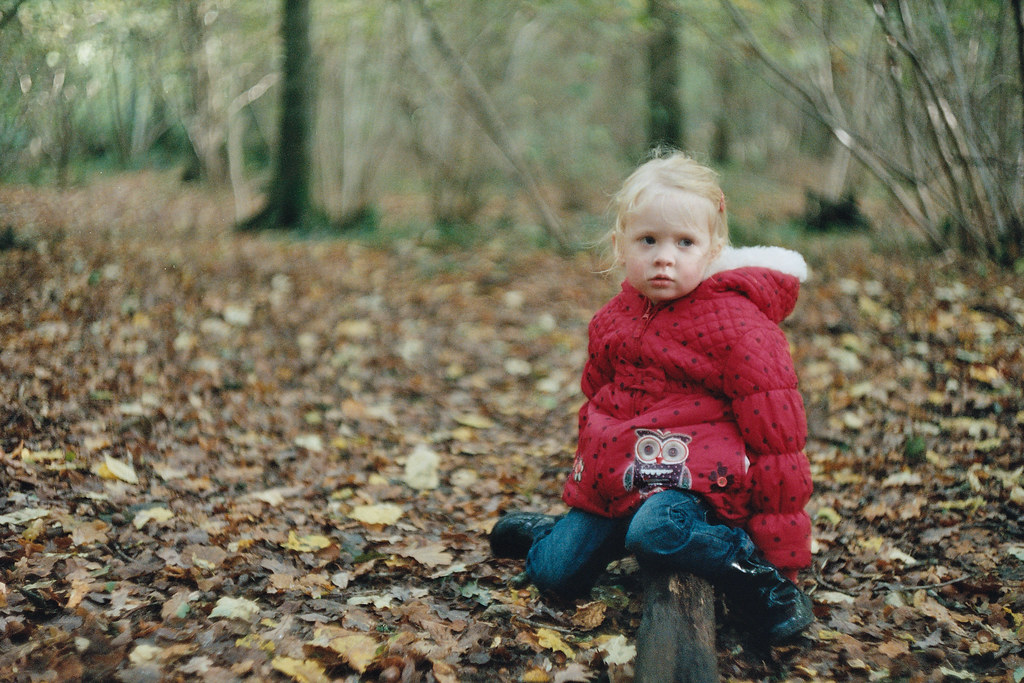
Regardless of whether or not my assertion is specifically correct, since “astigmatism” is a word often associated with “swirling bokeh”, it’s fairly safe to assume that when astigmatism is mentioned in the context of bokeh, a swirling out-of-focus is a distinct possibility.
I think it’s also important to make a point of differentiation between swirling bokeh and cats eyes alone. Cats eyes alone, can create a rotational effect in bokeh that doesn’t necessarily take on the swirling nature, and since cats eyes are also pretty much a given with wide aperture lenses, they therefore shouldn’t necessarily be included in what is defined as bad bokeh.
The effects of bokeh in real terms
All this theory is one thing, but in practice, the reality often seems something else… This is because, “good” and “bad” bokeh as defined above are really just definitions of the look of bokeh in any given individual photo. To define a lens as having “good” or “bad” bokeh is to say that it creates photos that fall into one of those categories universally. In my experience it’s very very rare for a lens to do this.
Because of this, I’ve come to think of lenses as not having “good” or “bad” bokeh specifically, but more that they sit on a scale of susceptibility to the influencers of creating “bad” bokeh in photos. That is to say that whilst all lenses aren’t as extreme in their potential to render bokeh in the way a Meyer Trioplan might be, most, if not all lenses – given certain circumstances – can display traits that are on the side of the spectrum towards what is defined as “bad” bokeh.
A more accurate approach to describing bokeh
What I personally feel is a safer bet when describing bokeh is suggesting things like “this lens has a propensity toward causing smooth bokeh” or “it might be wise to err on the side of caution with this lens as the bokeh it creates tends towards distracting” … Of course, the reality here is that I’m being a bit of a pedant. But, the point is, no lens should be considered a magic bokeh bullet, nor some sort of evil bokeh killer. As since even the lauded Zeiss ZM Sonnar can cause confused bokeh, regarding any lens so positively will result in let down if you approach using it thinking it will always give perfect bokeh. Take this next photo, also by Ray Larose, the bokeh from the Sonnar has produced an effect that some might call distracting. (NH Highland Games on Film)
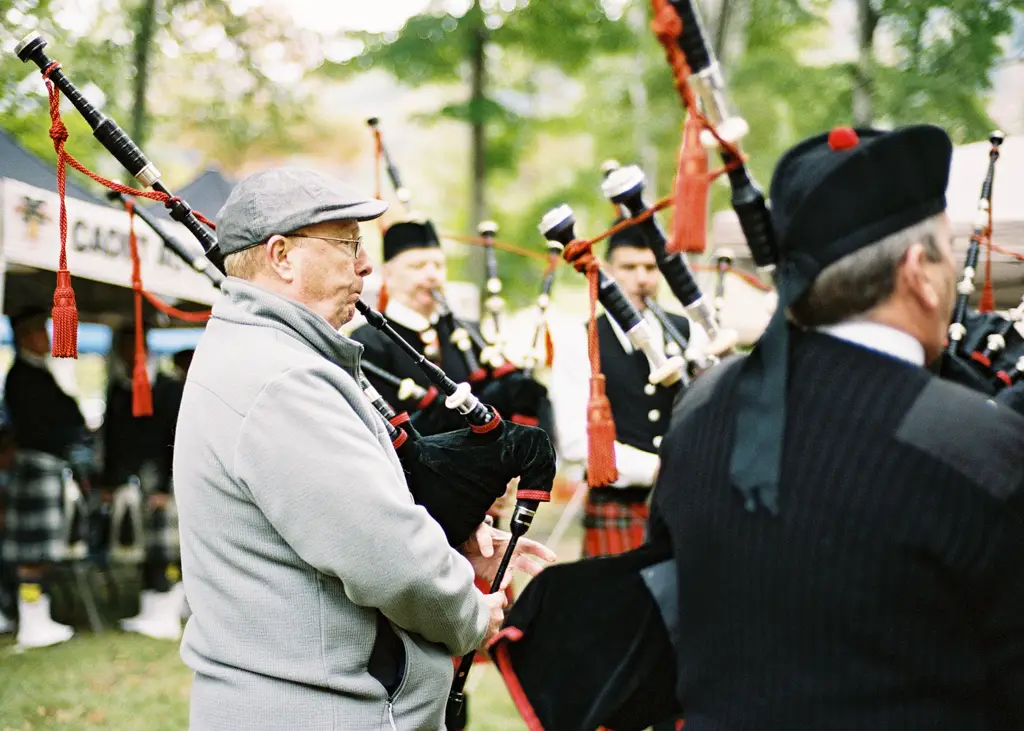
My thoughts on approaching and living with this complicated problem of bokeh
I – like a lot of photographers – had a period of fascination with Bokeh. It actually came just before I started this blog when I rediscovered a joy for compact cameras – or more specific to the context of this post – when I rediscovered the joy of the in-focus and forgot to think so much about the out-of-focus. I would probably go as far as to say my obsessive-about-bokeh period was the period of my photography that I felt the most lost and disillusioned. I was fascinated with discovering lenses and their ability to draw the out-of-focus in different ways. I did admittedly learn a lot about lenses in this process, but in the end I also learned that focusing on bokeh wasn’t a particularly productive direction to take my photography. What happened when I entered that mentality was that I stopped looking for subjects, and started looking for out of focus backgrounds. I started to focus almost entirely on bokeh – which if you think about it is actually an oxymoron. Folks who obsess about bokeh, are obsessed with looking at the thing that they shouldn’t be looking at in a photo. This is what I call the “hypocrisy of the bokehphile” – they say they want something that isn’t distracting, but then get distracted by how creamy and smooth and bokehlicious their bokeh is…
Some of the photos I’ve used in this post are from that period in my photographic journey – I don’t think they have much merit as images, and as such hopefully demonstrate my point quite nicely.
Good bokeh by merit of precaution?
Now, I will admit there is an argument that says by taking precautions and buying glass that more frequently creates smooth creamy bokeh, you are reducing the chance that the third party observer will become distracted by what is supposed to be out of focus. But my counter to that is this: If the subject is strong enough, the character of the bokeh will be largely meaningless. not to mention the fact that short of extreme circumstances it’s quite likely that the third party viewer won’t take a second look at the bokeh anyway… especially if they themselves aren’t a photographer.
To my mind, there is also a fairly major argument that says that rather than thinking about how a lens draws bokeh, think about what it is you are taking a photo of. If you don’t like bad bokeh, one of the easiest precautions for avoiding it is not taking photos of your subject in front of things that cause bad bokeh!
Ok, so that’s a bit of a flippant thing to say. Clearly some circumstances involve taking a photo of a subject with a bad-bokeh-causing element behind the subject. When discussing this post with my mate James the other day he mentioned how one of his lenses – when combined with a certain teleconverter – causes very distracting bokeh. Unfortunately this particular lens is a long tele, and in combination with a teleconverter makes a good focal length for photographing birds. Birds live in trees, so unfortunately what tends to be behind the birds is one of the worst influencers of confusing bokeh, back-lit foliage. The result is a bad choice of lens for ornithological photography. But, use the same lens combo for Motorsport photography and it’s a potentially different story – racing cars, as it turns out, don’t live in trees.
Choosing the right lens for the job
The answer to this is of course a simple one, if you like taking photos of birds in trees, it might not be practical to buy whatever lens/teleconverter James has. But, importantly, if you’re a Motorsport photographer, maybe that combo is the least expensive way to achieve the long focal length you need? And maybe since you’re panning most of the shots you take with it, and the cars are on a track and not in a tree, the “bad” bokeh is never an issue of note.
This is of course quite an extreme example, but a similar logic can be applied to the Voigtlander 50mm f1.1 I reviewed some months ago. As I mentioned in that post, if you don’t like wild distracting bokeh, it’s possibly not the right lens for shooting in daylight wide open with foliage in the background. But since it’s a f1.1 lens, when shooting it at night, or in very low light, it does have advantages over lenses that outweigh its potentially variable bokeh.
Embracing distracting bokeh
There is also an argument for embracing distracting bokeh, accepting it as part of a photo, or perhaps more just thinking about the bokeh as part of context of the photo. Take fairy lights for example, another well known cause of broadly distracting bokeh. Whilst they are distracting in bokeh, they are also distracting things in real life. Try walking into a room with a Christmas tree in the corner and not getting distracted, or even potentially entranced by the twinkling lights. So, when taking a photo in front of them, surely there is a place for them to be distracting or eye catching in a photo. As if to emphasise my point take a look at this exercise in futility – lenses of all sorts of calibre in there, not one of them manages a photo of fairy lights that aren’t distracting.

Again, same goes for the lights at a Christmas fayre. I took stacks of photos over the last Christmas period with my Voigtlander 50 f1.1 at Christmas Fayers. Yes the bokeh could have been smoother or creamier, but I’m not sure if that would really have added or detracted from the photos – personally, I err toward thinking a creamier bokeh would have detracted from some of the narrative. Try walking through a Christmas fayre without being distracted by the massive array of flashing and twinkling lights all around you. The point I’m labouring here is that photography is about – amongst other things – telling a story, who’s to say distracting bokeh cant be part of that story, just as any other element of a composition can be…?
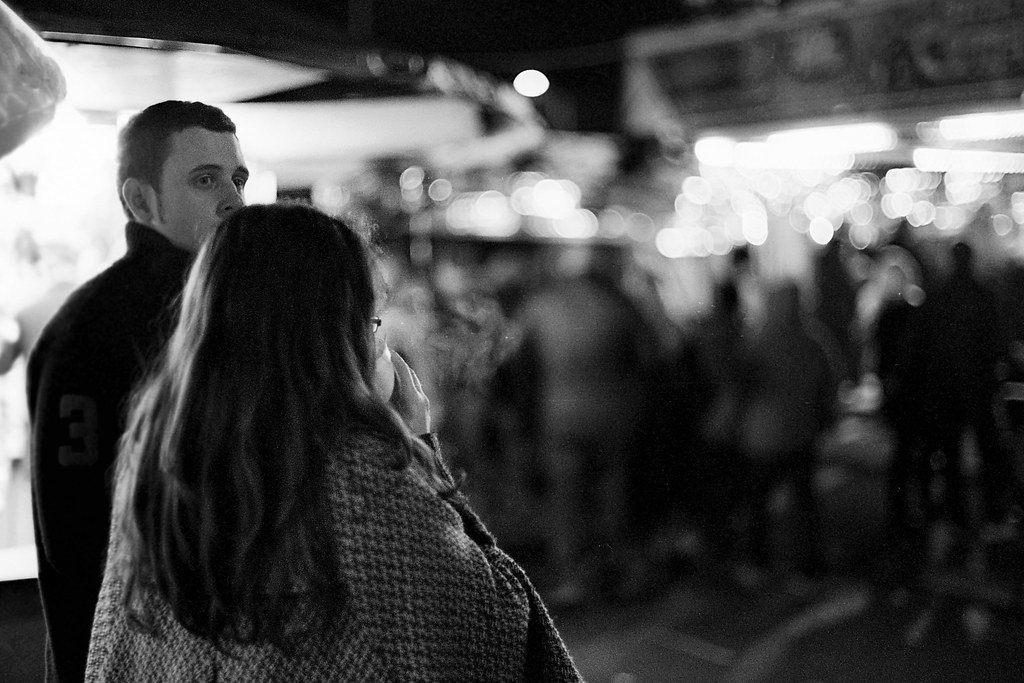
Bokeh as a part of the creative process
I mentioned above that for me focusing on bokeh wasn’t a particularly productive way to approach photography. Whilst I feel this is the case for most of my photography, it isn’t to say that I preclude the effects of bokeh from the creative process. What I mean by this is that whilst I don’t think it should be a consideration of greater importance than any of the other variables in photography for the general shooter, it is of course a greater consideration for someone with a specific goal in mind.
As such, sometimes there doesn’t even need to be a deep narrative to a use of bokeh, sometimes it’s simply about aesthetic. Done well, a swirling vortex of bokeh behind a subject can give a feel of mystery or forbidding… Or even just look pretty in the way a creamy bokeh might…
So what’s the conclusion to all of this??
I feel like I’ve been round the houses a bit with this post, kudos in fact if you’ve braved it this far and not dozed off. It’s just one of those subjects that seems – as I mentioned at the beginning of this post – to unravel the more you think about it. The conclusion for me though is a lot more simple than I may have made out…
Bokeh is important, but no more important than any other part of a photo. Yes it can be a part of the creative process, but in the type of photo where it is of profound importance to said process, a well chosen background is as valuable as a well chosen lens. And the reality is, most people’s goals aren’t that specific. Largely speaking, a lens that is consistent and largely reliable in most of the other factors that might influence the choice of a lens, is probably the right choice of lens. After all, as I say, not only are most lenses capable of bad bokeh they might at the same time be capable of being as sharp as you need or want, they might also be flare resistant, might vignette, or indeed not to a degree that appeals… There are stacks of variables in the way a lens renders, bokeh is just one of them.
Most importantly just as there is no magic-bokeh-bullet lens that creates perfect bokeh every time, bokeh itself is no magic bullet for creating the perfect photo every time. “Good” bokeh is not a prerequisite for a good photo, nor is “bad” bokeh a prerequisite for a bad photo.
It’s true that sometimes distracting bokeh can pop up when you least expect it. But as I’ve said, if the content or the narrative is good enough, it won’t matter nearly as much as if it isn’t. Take this last photo, do you see the distracting bokeh, or do you see a little girl reaching out of the front door of her house to feel the rain that’s stopping her from going out to play?
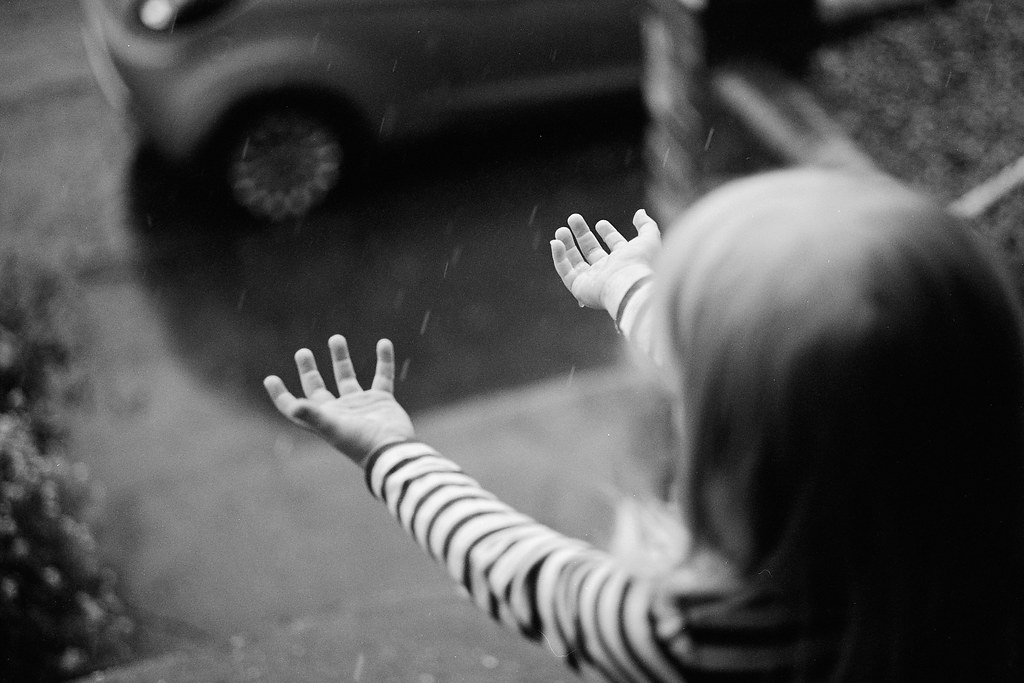
Cheers for reading
Hamish
Resources, links and further reading
On Bokeh – Jakub Trávník’s resources
Share this post:









Comments
aukje on Understanding lens terminology – Part 2 – Bokeh
Comment posted: 13/06/2015
Comment posted: 13/06/2015
Gábor on Understanding lens terminology – Part 2 – Bokeh
Comment posted: 13/06/2015
What a post! I really enjoyed reading it. I am myself a big fun of bokeh and I use the famous Zeiss Sonnar ZM as my primary lens and have several Sonnar labeled or Sonnar type lenses.
On the other hand I have to agree with you. If the subject is not strong enough, no bokeh can save a photograph. But if the subject and the composition is good, bokeh will be most likely just ignored. In my personal opinion the the whole thing is a little bit overrated.
But there are folks out there including myself who loves to analyze the character of a lens or a given lens design. And after all, bokeh gives a big part to the character of a lens. So I think it is important to many and it was nice to read your point about it. And thanks for the linked posts. I found the more scientific one quite interesting too.
Cheers, Gábor
Comment posted: 13/06/2015
The Voigtlander f/3.5 50mm VM Heliar - a review of two halves - 35mmc on Understanding lens terminology – Part 2 – Bokeh
Comment posted: 16/09/2017
Sony 135mm STF 'Smooth Trans Focus' - A Different Compromise for Sharp Focus and Smooth Bokeh on Understanding lens terminology – Part 2 – Bokeh
Comment posted: 25/05/2020
Olympus 35 RC – Fup Duck Photography on Understanding lens terminology – Part 2 – Bokeh
Comment posted: 17/12/2020